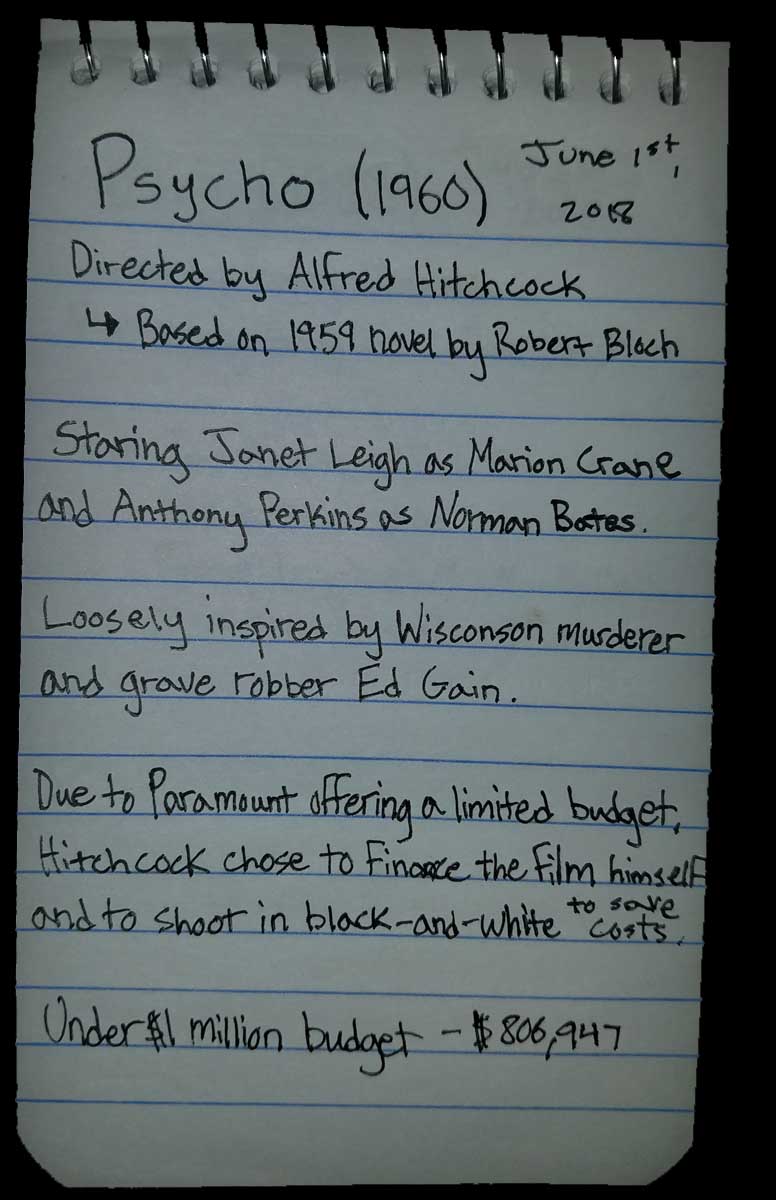Posted on June 1, 2018
Psycho
Psycho (1960)
Psycho is a psychological horror film directed by Alfred Hitchcock. The film was based on the 1959 novel of the same name by Robert Bloch.
It was a low-budget (800k) black-and white film that helped lead to the creation of the slasher film genre.

The Story (SPOILERS)
The film revolves around Marion Crane, a secretary that steals money from her employer. Her plan is to use the money to get married to her boyfriend Sam.
The character is played by Janet Leigh. The film becomes suspenseful due to her running away with the stolen cash (a MacGuffin, a film technique that Hitchcock was popular for).

After driving through the night, she pulls over on the side of the road and falls asleep. She is woken by a state patrol officer.
Marion stops at an automobile dealership and trades in her car (to shake the tailing police officer). Frightened and tired, Marion drives closer to California but is slowed by a violent rainstorm.
She pulls into the Bates Motel for the night.

Marion enters the office and meets the proprietor, Norman Bates. He mentions the lack of business due to being bypassed by the new interstate.
She proceeds to check herself in under a false name. He invites her to dinner (sandwiches) and they eat in the motel parlor.
The parlor is covered with stuffed animals, and Norman tells her about his life.

Norman is a lonely person who looks after his mother, who is mentally ill. She forbids him from having a decent life and he notes that “a boy’s best friend is his mother”.
They conclude their conversation with Marion deciding to go back to Phoenix and return the stolen money. She unknowingly states that she signed in under a false name, leading to Norman’s fascination and voyeuristic intent.
The Shower Scene
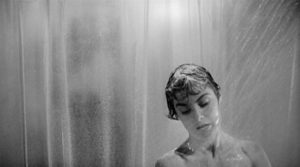
As Marion showers, a shadowy figure stabs her to death with a chef’s knife. Unlike similar horror films, Psycho never shows gore or actual stabbing.
It focuses more on the action of the killing, showing blood circling the drain and a close up on Marion’s unblinking corpse. The shrieking violin score accompanies the scene, adding to the action.
The blood used in the scene is chocolate syrup, which appeared more realistic on black-and-white film than stage blood.
Norman discovers the murder and figures that his mother is responsible. He cleans up the crime scene and puts Marion’s corpse and possessions (including the stolen money) into her car.
Norman sinks it in the swamps near the motel.
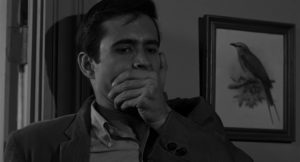
A week later, Marion’s sister Lila confronts Sam about the whereabouts of her sister. A private investigator named Milton Arbogast tells them that Marion is wanted for stealing the money.
He checks several motels and confronts Norman. After hearing that Marion met Norman’s mother, he goes to the Bates’ home in search of Norman’s mother.
As he searches the home, he is murdered and falls down the stairs.

When Lila and Sam are not updated by the investigator, Lila and Sam go to the local sheriff. He informs them that Mrs. Bates killed herself ten years ago.
Terrified, Lila and Sam go to the motel and meet Norman.
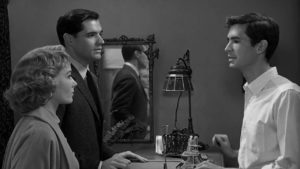
Sam distracts him while Lila sneaks up to the house. Lila finds Mrs. Bates in the cellar and discovers that she is a mummified corpse.
Lila screams as Norman charges to attack her, holding a knife and wearing his mother’s clothes and a wig. Before Norman can attack her, Sam tackles Norman.

At the courthouse, a psychiatrist explains Norman’s reasoning. He murdered his mother, and due to his guilt, developed a second personality.
This personality was responsible for the murderous actions of the film. The psychiatrist says the “Mother” personality has overtaken Norman’s mind and the film ends with Norman debating his actions.
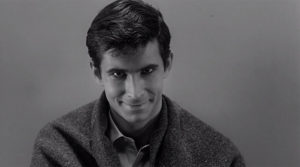
Bloch’s 1959 novel loosely alluded to the Plainfield, Wisconsin serial killer Edward Gein. When police searched his home, they found furniture, silverware, and even clothing made of human skin and body parts.
Gein served as a model for several famous villains, most notably Norman Bates (Psycho), Leatherface (The Texas Chain Saw Massacre), and Buffalo Bill (The Silence of the Lambs).
Analysis/Review
Psycho is a classic film. While it may deter some by being in black-and-white, the masterful shot direction, captivating dialog, and intense structure still offers a satisfying experience.
The historical magnitude of this film provides justification to film-making as an art form. There isn’t an endless stream of physical action, but instead a focus on rising tension.
That fact gives meaning and a lasting impact that has allowed this film to be recognized for it’s strengths. If you ever get the chance to see it, you may find it to be a new favorite.
Film Notes
